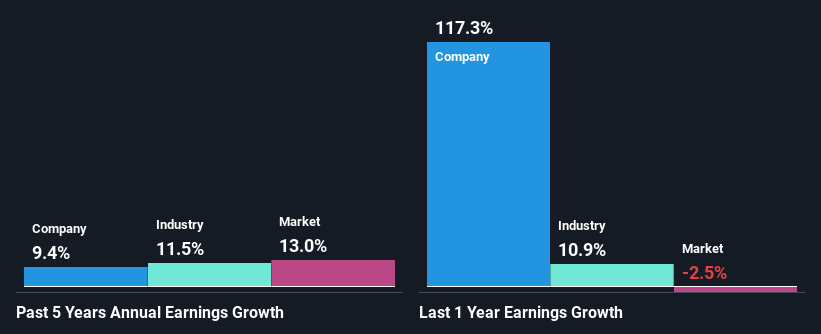With its stock down 2.0% over the past three months, it is easy to disregard Xylem (NYSE:XYL). But if you pay close attention, you might find that its key financial indicators look quite decent, which could mean that the stock could potentially rise in the long-term given how markets usually reward more resilient long-term fundamentals. Specifically, we decided to study Xylem’s ROE in this article.
Return on equity or ROE is a key measure used to assess how efficiently a company’s management is utilizing the company’s capital. In short, ROE shows the profit each dollar generates with respect to its shareholder investments.
Check out our latest analysis for Xylem
How Is ROE Calculated?
The formula for ROE is:
Return on Equity = Net Profit (from continuing operations) ÷ Shareholders’ Equity
So, based on the above formula, the ROE for Xylem is:
7.4% = US$765m ÷ US$10b (Based on the trailing twelve months to June 2024).
The ‘return’ refers to a company’s earnings over the last year. One way to conceptualize this is that for each $1 of shareholders’ capital it has, the company made $0.07 in profit.
Why Is ROE Important For Earnings Growth?
We have already established that ROE serves as an efficient profit-generating gauge for a company’s future earnings. Depending on how much of these profits the company reinvests or “retains”, and how effectively it does so, we are then able to assess a company’s earnings growth potential. Assuming all else is equal, companies that have both a higher return on equity and higher profit retention are usually the ones that have a higher growth rate when compared to companies that don’t have the same features.
Xylem’s Earnings Growth And 7.4% ROE
When you first look at it, Xylem’s ROE doesn’t look that attractive. A quick further study shows that the company’s ROE doesn’t compare favorably to the industry average of 15% either. However, the moderate 9.4% net income growth seen by Xylem over the past five years is definitely a positive. We reckon that there could be other factors at play here. Such as – high earnings retention or an efficient management in place.
Next, on comparing Xylem’s net income growth with the industry, we found that the company’s reported growth is similar to the industry average growth rate of 11% over the last few years.

Earnings growth is a huge factor in stock valuation. What investors need to determine next is if the expected earnings growth, or the lack of it, is already built into the share price. This then helps them determine if the stock is placed for a bright or bleak future. Is XYL fairly valued? This infographic on the company’s intrinsic value has everything you need to know.
Is Xylem Making Efficient Use Of Its Profits?
With a three-year median payout ratio of 50% (implying that the company retains 50% of its profits), it seems that Xylem is reinvesting efficiently in a way that it sees respectable amount growth in its earnings and pays a dividend that’s well covered.
Besides, Xylem has been paying dividends for at least ten years or more. This shows that the company is committed to sharing profits with its shareholders. Upon studying the latest analysts’ consensus data, we found that the company’s future payout ratio is expected to drop to 30% over the next three years. Accordingly, the expected drop in the payout ratio explains the expected increase in the company’s ROE to 11%, over the same period.
Summary
In total, it does look like Xylem has some positive aspects to its business. Despite its low rate of return, the fact that the company reinvests a very high portion of its profits into its business, no doubt contributed to its high earnings growth. Having said that, looking at the current analyst estimates, we found that the company’s earnings are expected to gain momentum. To know more about the latest analysts predictions for the company, check out this visualization of analyst forecasts for the company.
New: AI Stock Screener & Alerts
Our new AI Stock Screener scans the market every day to uncover opportunities.
• Dividend Powerhouses (3%+ Yield)
• Undervalued Small Caps with Insider Buying
• High growth Tech and AI Companies
Or build your own from over 50 metrics.
Have feedback on this article? Concerned about the content? Get in touch with us directly. Alternatively, email editorial-team (at) simplywallst.com.
This article by Simply Wall St is general in nature. We provide commentary based on historical data and analyst forecasts only using an unbiased methodology and our articles are not intended to be financial advice. It does not constitute a recommendation to buy or sell any stock, and does not take account of your objectives, or your financial situation. We aim to bring you long-term focused analysis driven by fundamental data. Note that our analysis may not factor in the latest price-sensitive company announcements or qualitative material. Simply Wall St has no position in any stocks mentioned.

















